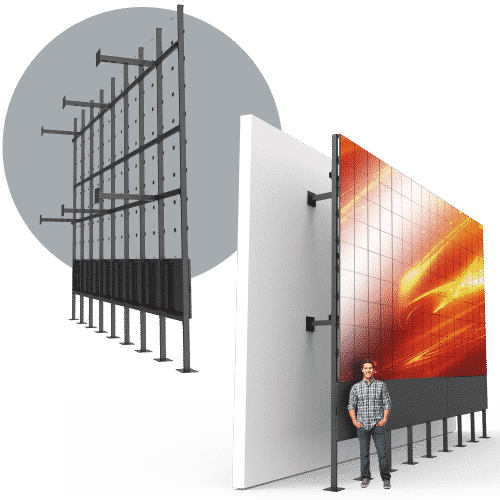Explaining Luminescent Wall Screen Illumination Metrics aiming at Optimal Visual Performance
Explaining Luminescent Wall Screen Illumination Metrics aiming at Optimal Visual Performance
Blog Article
LED wall panels are increasingly favored in various settings, from residences and commercial spaces as well as communal areas. Such screens are known for their bright and dynamic visuals, that render these ideal for conveying information, advertisements, as well as engagement. However, understanding the illumination levels for Light Emitting Diode wall panels is crucial to guaranteeing ideal display performance. Brightness is measured in units known as candelas, that indicate how much light produced by the panel. The greater number of quantity of nits, the more luminous a visual will be. For, instance, one panel with one thousand candelas stands significantly brighter than a featuring 500 nits, making this one better equipped in well-lit environments.
When choosing an LED wall panel, it becomes crucial in take into account which environment in which the screen will be placed. For well-lit illumined areas, like retail environments or outdoor settings, a higher brightness level becomes essential for guaranteeing clarity. On the other hand, within dimmer settings, like cinemas and meeting spaces, lower diminished illumination rate might be adequate. This excessive bright unnecessary luminosity within an dim setting can result to discomfort among the audience, causing them more difficult for concentrate with a screen. Thus, understanding the specific requirements for the installation location can aid with selecting a suitable illumination rate to ensure optimal viewing experience.
Another important factor for take into account the contrast differential proportion in an Light Emitting Diode panel screen. This ratio measurement indicates how much difference between the brightest white and the dark shade that the screen can create. A higher contrast ratio means the display can it is capable of show more detail as well as richness, thereby enhances overall image quality. For instance, one screen boasting an contrast ratio of 10,000:1 will show images with more brilliant hues as well as crisper details compared to one featuring a proportion at 1,000:1. This is particularly crucial in instances more info here where showing visuals or videos that demand greater clarity and fine details, including slideshows and advertising material.
Moreover, the technology behind Light Emitting Diode panel screens plays a crucial role for the illumination and overall performance. Various kinds of LED technologies, such as OLED as well as Liquid Crystal Display, possess distinct traits that affect the way luminosity is experienced. OLED panels often provide better contrast and darker shades, thereby may enhance the visual experience within darker environments. Conversely, standard LED screens might be more suitable in well-lit environments due to the capacity to generate greater levels of brightness. Understanding these tech-related variances will guide users to deciding on informed decisions according to their individual requirements.
Finally, consistent care and calibration for LED wall screens may help preserve ideal illumination and efficacy over time. Dust and particles may accumulate on a surface, impacting its brightness as well as sharpness of a visual. Periodic cleaning as well as professional calibration may ensure that panel panel operates the original source in top best, providing uniform image quality. Additionally, certain advanced LED panel panels feature built-in built-in options that allow users to modify brightness settings and color adjustments according to individual wants. By implementing such measures, operators can ensure that LED Light Emitting Diode wall screens deliver the optimal display efficiency, no matter where setting in that these are placed.